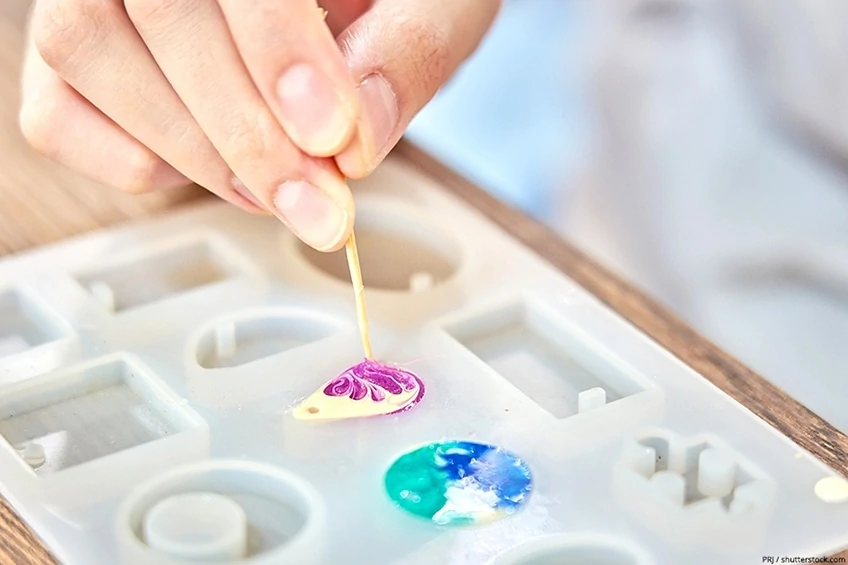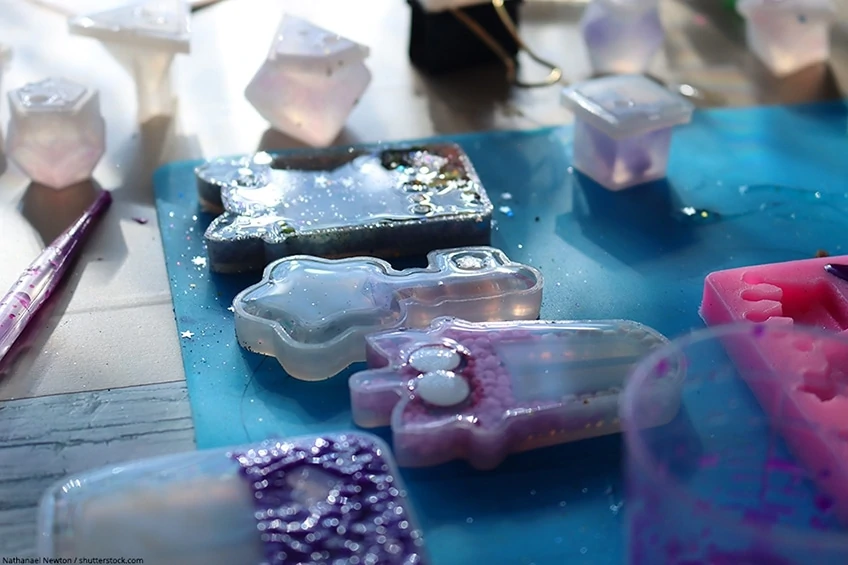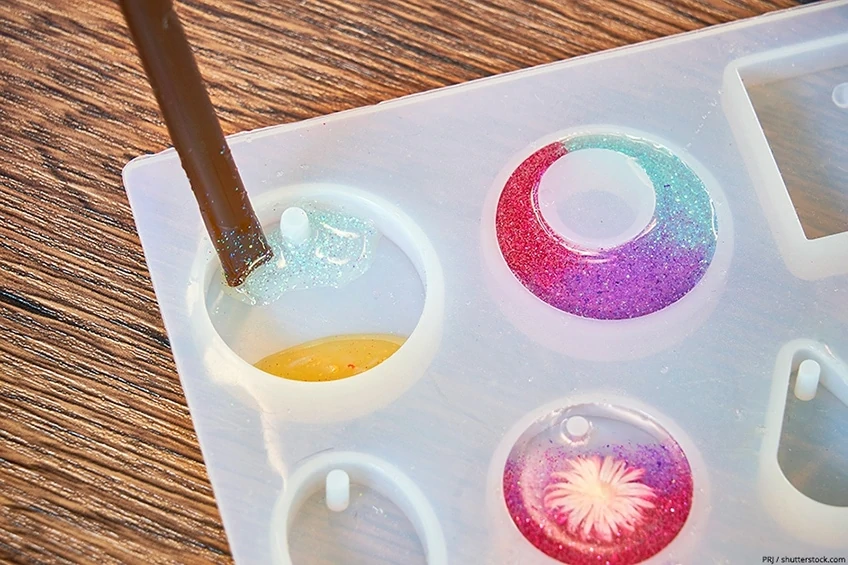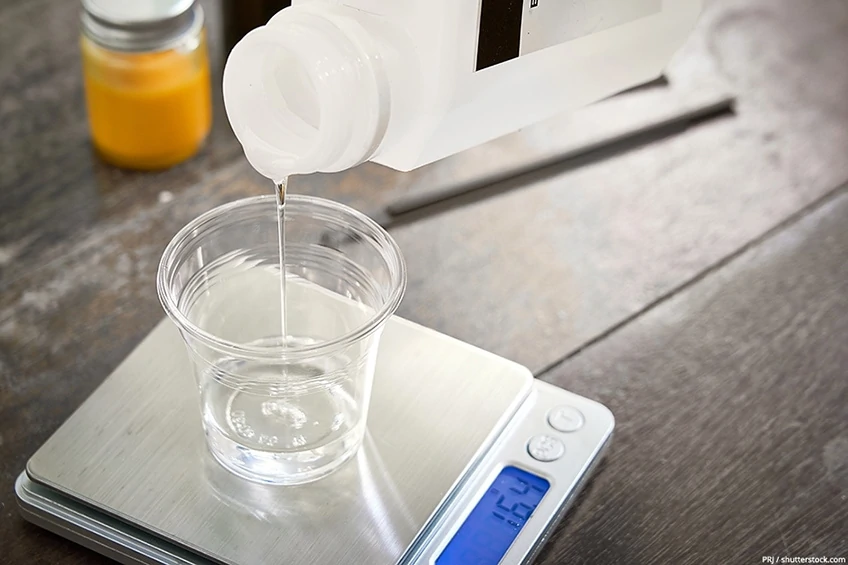How to Harden Sticky Resin – Fix uncured Epoxy Resin
This post may contain affiliate links. We may earn a small commission from purchases made through them, at no additional cost to you. You help to support resin-expert.com
You’ve done it! You slaved over your epoxy resin project for hours, from setting up your workspace, mixing the resin and hardener, maybe even added some colorants to give it a unique look. After waiting days for it to finish curing, you are ready for the big unveiling. And then, you find tacky or runny resin, or soft spots, on the epoxy surface. Now what?!
Table of Contents
How to harden different types of sticky resin summary
- Sticky resin: leave it as is, and add the new resin on top
- Runny resin or soft spots: make sure you scrape all of it off
- If you have areas that cured perfectly: sand it with coarse-grit sandpaper. Wipe the surface clean of any dust, then apply a fresh resin layer after you made sure the surface is completely dry
- Let the new, fresh layer of resin cure for at least 24 hours: If you have followed the steps above, your resin piece will look like there was never anything wrong to begin with
Problem #1 – How to harden sticky resin
If you were wondering how to harden sticky resin, or if that is not an option, what else to do when epoxy doesn’t harden, you have come to the right place. Some of these are easier to fix than others, but if you follow our pointers as below, you should be able to find out what to do if epoxy doesn’t harden.
Sticky resin means that the resin has solidified and is not moldable anymore, but still has a sticky feel to it – like the sticky side of tape.
Possible reasons
Sticky resin is actually more common than you might think, and the main reasons for this happening are:
- The ambient temperature of your workspace was too low: the ideal temperature, especially for the first 24 hours, is 75-85°F (24-30°C)
- The ration of resin to hardener is incorrect: resins have to be mixed according to strict measurement ratios (usually 1:1, or 2:1 – consult the product information enclosed in the packaging for specific details)
- Not mixing it thoroughly: mixing for at least 3 minutes is recommended, so that the resin and hardener can mix properly. Scrape the sides of the mixing container too, in order to make sure all the material is mixed
How to harden sticky resin
Here’s how to fix your sticky epoxy resin. Fortunately, this is one of the easiest things to fix when epoxy goes wrong. If there are no soft spots, or runny epoxy, on your project, you can simply pour properly measured and mixed resin over the epoxy surface. Then, let it cure properly.
However, if you found that the initial problem was that the temperature was too cold, move your resin piece to a warmer spot and give it 24 hours – you may find it will cure fully then.
You can also try to sand the surface with several grits of wet/dry sandpaper. You could well sand through the top, sticky layer and get to a solid surface underneath it. This you can then finish as desired. As another alternative, you can use an acrylic or resin-based sealer spray to seal the surface.
Problem #2 – Runny Resin
This may look like uncured, freshly mixed resin. Or, it may have solidified slightly, but still feels gooey or wet. And now you are wondering how to make the resin harden.
Possible reasons
- The ratio of resin to hardener wasn’t follow precisely: always make sure you measure accurately and adhere to the mixing ratio of the particular product you are using (you can find this information with the packaging in came in)
- You may have measured by weight and not volume: this again will vary between products, but most epoxy resins are formulated to be mixed by volume.
- It is possible that you may have mixed resin with resin, or hardener with hardener. In this instance, the chemical reaction that is necessary for the epoxy to harden, will not take place.
- Too much colorant was added: add colorant up a maximum of 6% of the total volume of the mixed resin and hardener. For instance, if the total combined volume is 100ml (50ml resin and 50ml hardener), the maximum amount of colorant added should be 6ml.
How to fix Runny Resin
The most important course of action to fix uncured resin is to scrape off all the runny, or gooey, resin first. If this is not done thoroughly, the liquid resin that remains may leak out from under the covering layer of fresh resin you will add later.
Once you have all the wet resin off, you can apply a new coat of resin. Again, make sure you mix it thoroughly, and in the correct ratio, for best results.
Problem #3 – Soft spots
This will look like soft, or wet, spots that are randomly spaced on an otherwise perfectly cured epoxy resin surface.
Possible reasons
You probably scraped the sides of the mixing container when you poured the resin. We did mention above that, when mixing, you should make sure that you scrape the sides of the mixing container to make sure all the material has properly mixed.
However, when you pour the mixed resin and hardener, we advise that you not scrape the sides. If you do this, then any unmixed resin or hardener may get into your epoxy resin pour and cause areas of soft, or wet, spots in the cured product.
How to fix Soft Spots in Resin
First, scrape off any soft or wet resin as best you can. If you don’t, it may leak out from the new layer that you will apply later. For the entirely cured resin, take some coarse-grit sandpaper (say, 80 grit) and sand the entire surface Epoxy surface.
When you are done, make sure you wipe the surface with a damp paper towel to remove the sanding dust. Dry the surface well. You will notice that this is similar to surface preparation for adding new layers for a deeper pour.
Once the surface has been sanded, you got rid of all the soft resin, and the surface is dry, you can apply a new coat of epoxy resin. Give the new, fresh layer of epoxy resin 24 hours to dry, and you will have a great-looking covering for your work.
Tips and Tricks to harden sticky resin
Fixing sticky epoxy resin is not all that difficult to do. However, it is still easier, and preferable, to avoid making any mistakes to begin with when working with epoxy resin. Remember the following:
- Make sure the ambient temperature of your workspace is 75-85°F (24-30°C)
- Make sure you add maximum 6%, by volume, colorant to your epoxy mixture
- Make sure you follow the correct mixing ratio for resin and hardener
- Make sure you mix thoroughly for at least 3 minutes
- Make sure you scrape the bottom and sides when you are mixing
- Make sure you DO NOT scrape the bottom or sides when you pour
Some users of resin have even come up with some interesting tricks on how to fix sticky epoxy resin, including:
- Coating the surface with Mod Podge, which created a solid, clear covering after 24 hours. They added this after cleaning the surface of any gooey resin, and they were left with just the sticky resin surface
- Coating the tacky resin with triple-thick polyurethane. They applied two light layers on an epoxy table. It is crucial you don’t spray it on too thick, as it will go cloudy.
As a final tip, also make sure of the expiry date of the product that you are using. Expired epoxy resin will not cure properly, even if you follow the correct mixing ratio and methods. Keep in mind that unmixed resin and hardener have a shelf-life of 12 months in sealed containers, but once opened, it has a maximum of six months to be used in.
So, you see, there are many different reasons why your epoxy resin didn’t cure or dry properly. Just remember to follow the instructions precisely, keep an eye on the temperature of both the resin and the workspace, and you will most likely avoid many of these mistakes.
Fixing sticky epoxy resin isn’t all that difficult, and there is no reason why you shouldn’t try and do it for yourself. We are confident that, by following the steps, tips, and tricks laid out above, you will, in no time, learn how to fix sticky, or uncured, epoxy resin.







